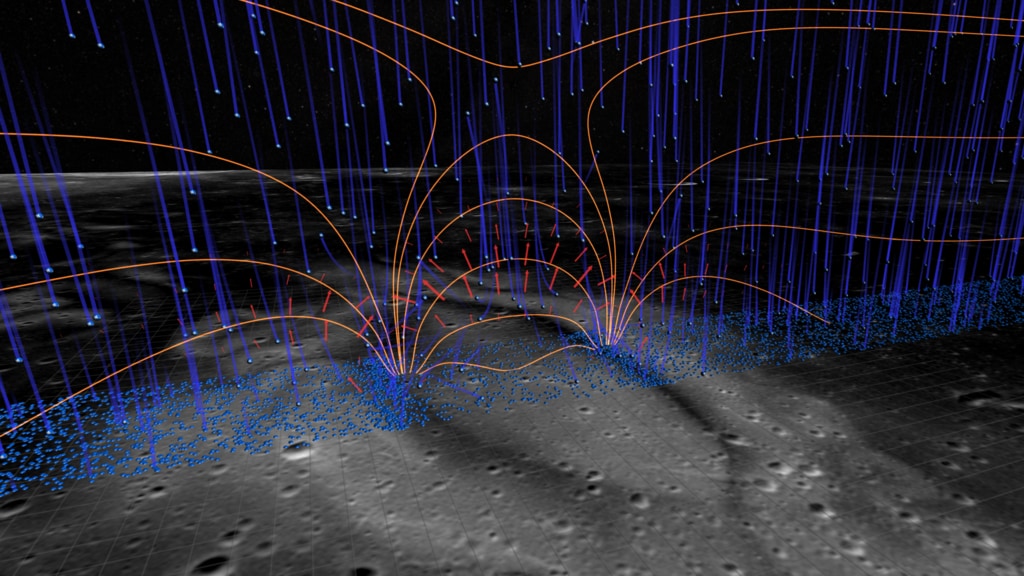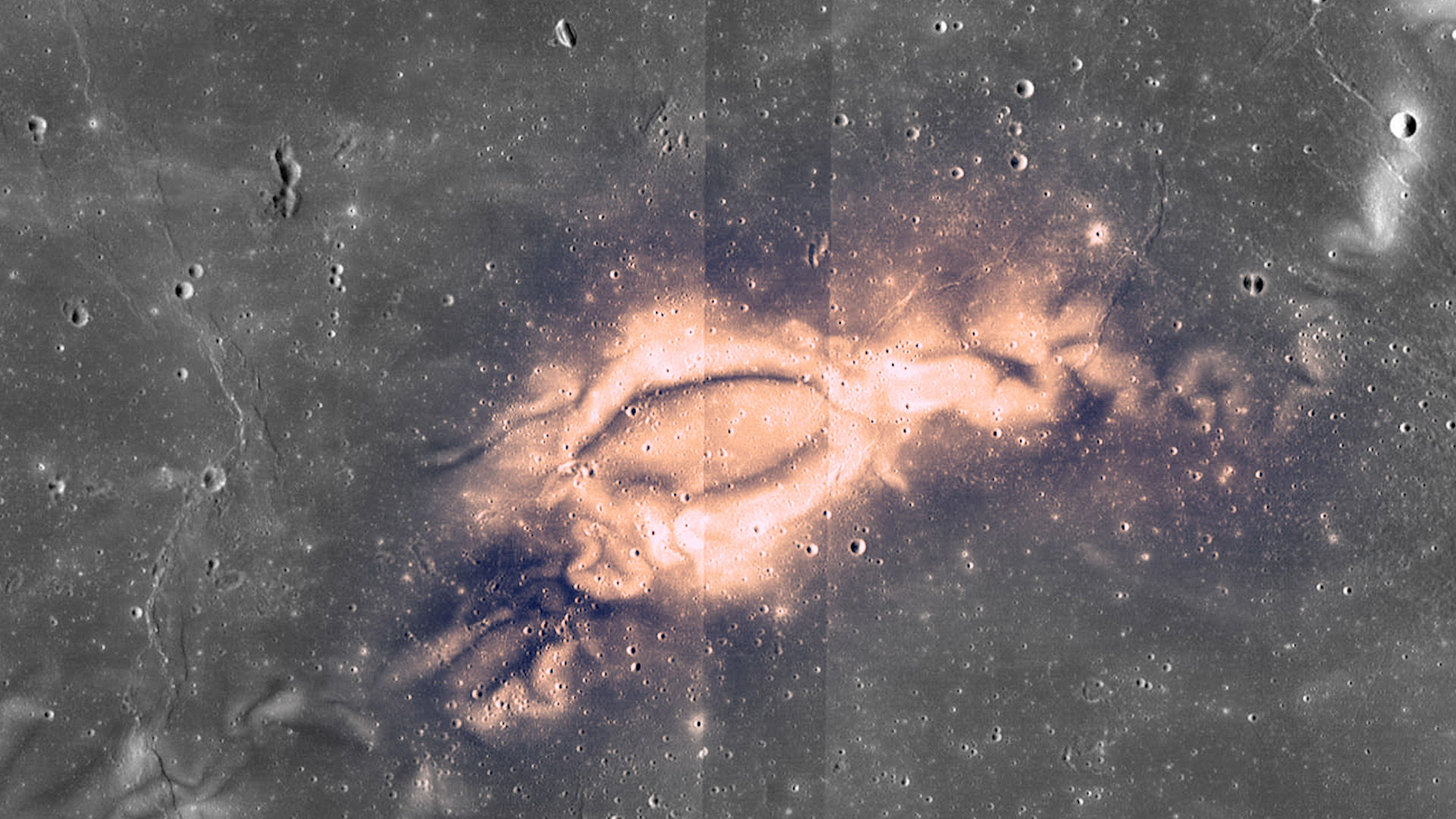Lunar Swirls: Reiner Gamma
Beginning with a full-globe view of the lunar near side, the camera flies to a close-up, increasingly oblique view of the lunar swirl called Reiner Gamma. Narrated by LRO Deputy Project Scientist Noah Petro. Music provided by Killer Tracks: Facing the Truth — TV Mix
by Eric Chevalier.
Lunar swirls are bright, often sinuous features with the diffuse appearance of abstract airbrush paintings. They are unique to the Moon and have long defied easy explanation. Five papers recently published in Icarus (1, 2, 3), JGR: Space Physics (4), and JGR: Planets (5) use a combination of computer modeling and the data gathered by Lunar Reconnaissance Orbiter (LRO) and other recent lunar missions to shed new light on the origin of these unusual surface decorations.
Reiner Gamma, a bright patch amid the otherwise dark Oceanus Procellarum mare, is perhaps the most spectacular example of a lunar swirl. Through backyard telescopes near full Moon, it looks like a small figure-8 on its side. LRO's view from orbit reveals tendrils and daughter swirls that extend for several hundred kilometers.
The animation zooms up on an LRO wide-angle camera mosaic of Reiner Gamma, then tilts the view to show that this large swirl is entirely two-dimensional — it's not a mountain range or a valley, but instead looks painted onto the surface. The narrated videos are available in both English and Spanish.
Datos captados por el Lunar Reconnaissance Orbiter fueron utilizados en la creación de esta visualización de Reiner Gamma — un remolino lunar. Este vídeo fue narrado por Nayi Castro Líder Técnica Diputada de el Lunar Reconnaissance Orbiter. Música proporcionada por Killer Tracks: Eric Chevalier, Facing the Truth — TV Mix
.
Beginning with a full-globe view of the lunar near side, the camera flies to a close-up, increasingly oblique view of the lunar swirl called Reiner Gamma.
Beginning with a full-globe view of the lunar near side, the camera flies to a close-up, increasingly oblique view of the lunar swirl called Reiner Gamma. This version omits the title text.
For More Information
Credits
Please give credit for this item to:
NASA's Scientific Visualization Studio
-
Visualizer
- Ernie Wright (USRA)
-
Technical support
- Laurence Schuler (ADNET Systems, Inc.)
- Ian Jones (ADNET Systems, Inc.)
-
Scientists
- Noah Petro (NASA/GSFC)
- John Keller (NASA/GSFC)
-
Producer
- David Ladd (USRA)
-
Narrator
- Noah Petro (NASA/GSFC)
-
Narrator (spanish)
- Nayi Castro (KBR Wyle Services, LLC)
Release date
This page was originally published on Monday, March 27, 2017.
This page was last updated on Sunday, February 2, 2025 at 12:08 AM EST.
Missions
This page is related to the following missions:Series
This page can be found in the following series:Related papers
Brent W. Denevi et al., The distribution and extent of lunar swirls, Icarus 273:15 (July 2016), pp. 53-67
Brent W. Denevi et al., The distribution and extent of lunar swirls, Icarus 273:15 (July 2016), pp. 53-67
Datasets used
-
WAC 643nm High Sun Global Mosaic [LRO: LROC]
ID: 803 -
LROC WAC Global Morphological Map (Global Morphological Map) [Lunar Reconnaissance Orbiter: Wide-Angle Camera]
ID: 926
Note: While we identify the data sets used on this page, we do not store any further details, nor the data sets themselves on our site.

